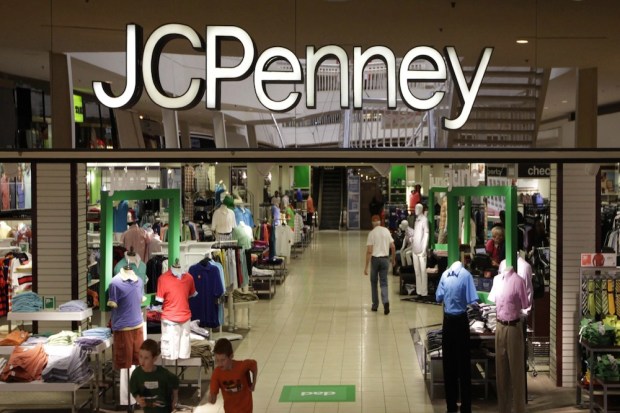JC Penney’s Retail Reinvention

The last time the JC Penney brand talked about reinvention, things didn’t end up so well. But the last several months, the 103-year-old chain has been under the leadership of a new CEO who’s once again talking about re-inventing the brand. Marvin Ellison tells PYMNTS how he’s thinking about reinvention, and why he’s totally confident that this time, the outcome will be different.
Retail reinvention is a dangerous game for an iconic brand — a lesson JC Penney has spent much of the last five years learning the hard way.
A decade ago, JC Penney was a thriving mid-level department store chain with a well-regarded Web store and a growing collection of popular store brands. Five years later, things were rolling downhill. As in really down. Sales were down, foot traffic was falling and JC Penney had developed a reputation for being everyone’s grandmother’s favorite store in which to buy an ill-fitting, ugly Christmas sweater, before ugly Christmas sweaters were in.
During the dark days of 2010-2011, JC Penney even managed to run afoul of the all-powerful Google algorithm when it was busted for “spamdexing” — an SEO enhancement tactic that was once a very popular method of faking out search engine index schemes to get better search ranking results from Google. According to a New York Times report, JC Penney — through a hired affiliates firm SearchDex — managed to pull off one of the most extreme cases of Google search gamesmanship the marketplace had ever seen.
“Actually, it’s the most ambitious attempt I’ve ever heard of,” search expert Doug Pierce told The Times. “This whole thing just blew me away. Especially for such a major brand. You’d think they would have people around them that would know better.”
They didn’t, and when Google found out they’d been played by Penneys, they both fixed the algorithm to make spamdexing harder to do and punished Penneys — hard. It was hard to get JC Penney to top a search result even after typing “JC Penney” into a Google during the first part of 2011.
However, by June, Google had to let the retailer back into the rankings when it announced that it had recruited Ron Johnson. Johnson is the man credited with masterminding Tar-jey’s brand and merchandising strategies in the late ’90s. He also created the Apple Store in the early 2000s. JC Penney of mid-2011 badly needed a reinvention, and Johnson seemed like just the guy to do it.
Which, in a sense, he was, though probably not in the same way that JCP was hoping for. Johnson’s plan to do away with sales, create a “turkish bazaar” feeling in the stores and radically attempt to pitch JC Penney to a new generation of consumers didn’t attract that sought after younger-hipper base — and instead only managed to successfully alienate the grandmothers who no longer recognized the store.
Within 18 months Johnson was out, and former CEO Mike Ullman was brought back on an interim basis to set the ship straight. And to mentor Johnson’s incoming replacement, Marvin Ellison.
Ellison, after nine months under Ullman, took the reins as the full time CEO in August. Things have improved at JC Penney, with small gains in stock price and some pick up in its bottom line. The ship has been somewhat righted, as share price has gradually increased 36 percent since the start of 2015. Ellison reports that Penneys has 86 million shoppers once again, which means the defectors from the Johnson-era have returned.
But with only $12.3 billion in sales projected for the fiscal year ending in January of 2016 – JC Penney still has much ground to gain back from a decade ago, when annual sales were logging in excess of $20 billion.
But despite the challenges ahead, the firm’s CEO remains optimistic about the firm’s future.
“We have a lot of work to do, we have to create that balance,” Ellison said in an interview of JCP challenges, particularly in creating a balance between the “art” and “science” of retail. “What is the science? We don’t have great analytics. We need eCommerce, supply chain, data processing help.”
“When you really look at what drove revenue down at JC Penney it wasn’t a competitor or a sudden change in consumers or technology. It was driven by bad decisions from one leader. That can be reversed — and our recent results have shown they are being reversed.”
Ellison is right, particularly about Penney’s recent earnings report, which bucked the recent trend among the big chain department stores like Macy’s and Nordstrom — both of which managed to miss analyst expectations and send shudders through the commerce landscape about the upcoming holiday season.
Penneys, on the other hand, beat the street, with sales up 6.4 percent and gross margin improved, driven by supply chain productivity and improvements in margins for its sale items. Revenue rose to $2.9 billion, also exceeding Street forecasts of revenue of $2.86 billion.
But investors were unimpressed with the growth so much as they were concerned Penney’s decision not to revise up its annual predictions was yet another harbinger of a weak upcoming holiday shopping season, which sent stock spiraling down another 13 percent after earnings were announced.
But despite the setbacks – JCP is committed to building a better customer experience. And that better experience, Ellison notes, is a two-part proposition for JCP. The first part is what he has taken to calling the “art” of retail — and the physical experience of being in the store itself and how it feels for the customer. That, he said, relates to what is available to the customer, how it is arranged and how it appears.
“That is a part of retail we’ve gotten good at,” Ellison said.
He also called out both the Sephora and Disney stores — a scaled back rendition of Johnson’s store within a store concept — that has been a big hit for the company, particularly in driving traffic from younger millennials (at Sephora) and millennial parents (Disney).
“We’re the only department store with Disney shops, which we think is a very important differentiation. We also have the Sephora stores, which is a great brand with great loyalty that has absolutely driven other traffic to our apparel sections and from a different customer base.”
But he said that the future growth of JCP is driven at least equally by the science of retail — a part of reinvention that he says mostly happens in the consumer peripheral vision.
“That means we have to develop better analytics. The problem JC Penney faces today is not that we don’t have data — it is that we aren’t using it fully. And that data has to be integrated and inform our choices across eCommerce, supply chain, data processing,” Ellison noted. “It also means building up world-class omnichannel options for consumers.”
The goal, Ellison noted, isn’t to try to reinvent retail to tell consumers how they are going to shop — it is to use the process to use everything they have learned, and have the potential to learn by asking better questions of their data to build the experience customers want.
“We have three large dot-com distribution centers with approximately 5 million square feet of space in strategic points throughout the nation. Our new omnichannel and supply chain leadership teams are working on digitizing those centers to create a seamless connection between our digital and brick-and-mortar customers.”
Reinvention is not a fast process or a simple one, especially when one is doing so in an environment where the most recent attempt at doing so ended quite badly. But Ellison thinks that JCP can do it – and though it won’t be flashy and in many cases will involve improvement that customers may never comment on, on some level it doesn’t matter if they do.
“We believe that (our) turnaround will be driven by three things,” Ellison said. “We have to make sure that we have a great omnichannel experience for customers, ensure that our private brands are something that create key points of differentiation, and we have to monetize every engagement with the customer so that when he or she comes in we offer them something that gives them the ability to solve a problem, serve a need and excite them to come back the next day.”
